Donkey Kong Bananza: The Emissary of Innovation
Our in-depth review of the base game and DLC
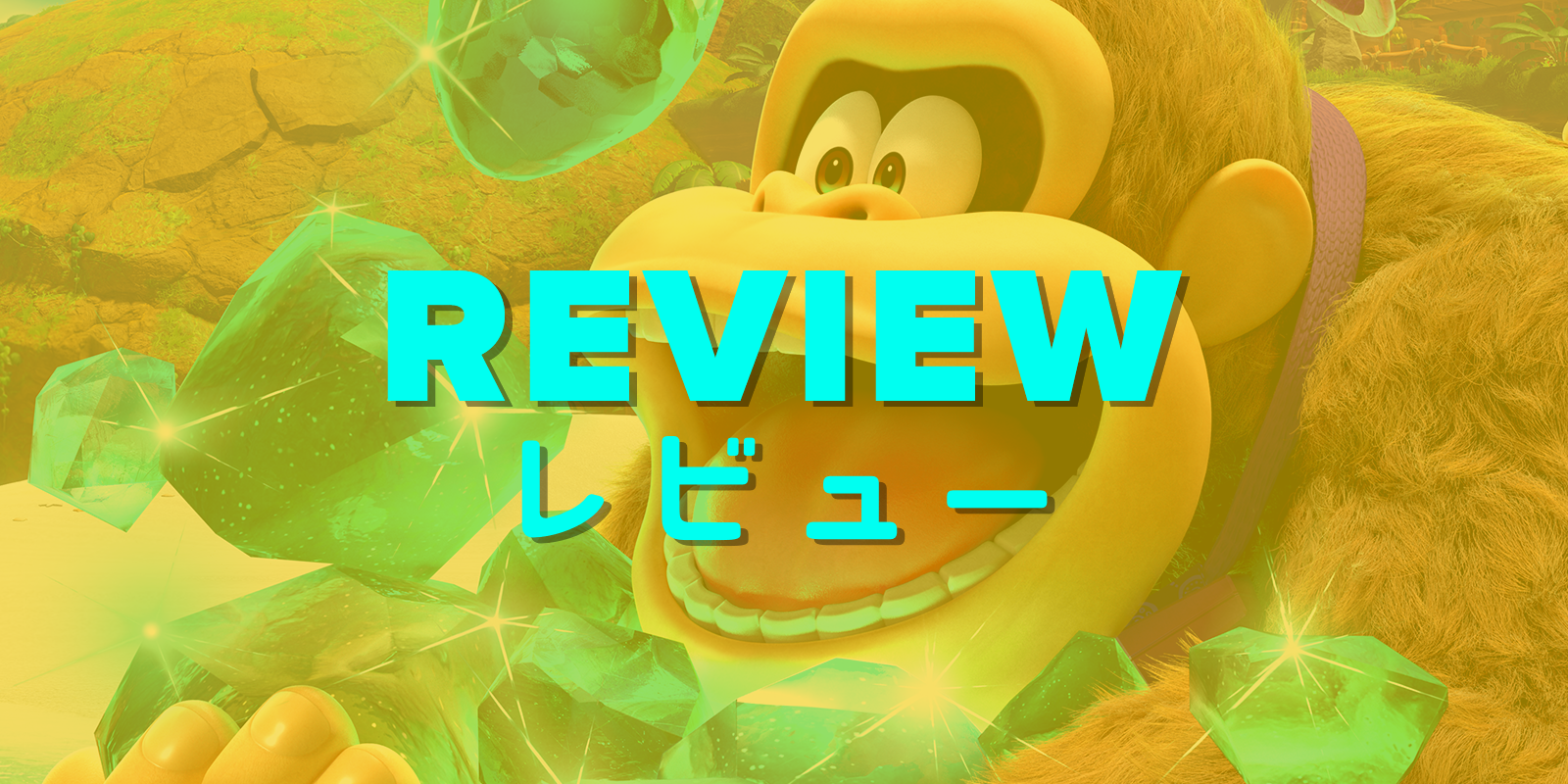 Source: Press Kit. Image edited by SUPERJUMP.
Source: Press Kit. Image edited by SUPERJUMP.
DK Island and Emerald Rush DLC code provided by Nintendo.
Nintendo are the masters of reinvention. As I noted in our recent Switch 2 launch video, Nintendo recruits beloved, familiar characters to guide players into novel experiences. These characters never remain completely static; they grow and change over time, just like the players who love them so. While nostalgia always has its appe…
Donkey Kong Bananza: The Emissary of Innovation
Our in-depth review of the base game and DLC
 Source: Press Kit. Image edited by SUPERJUMP.
Source: Press Kit. Image edited by SUPERJUMP.
DK Island and Emerald Rush DLC code provided by Nintendo.
Nintendo are the masters of reinvention. As I noted in our recent Switch 2 launch video, Nintendo recruits beloved, familiar characters to guide players into novel experiences. These characters never remain completely static; they grow and change over time, just like the players who love them so. While nostalgia always has its appeal, I personally gravitate towards surprise and delight, especially as I grow older. I can always go back and play the older games (well, mostly); the challenge for Nintendo (and for every game developer, really) is to show me something new - something I couldn’t have imagined before.
Donkey Kong Bananza does just that. Yes, it offers a mild makeover for Donkey Kong himself, but that’s really just a footnote: on almost every level, Bananza is a bold reinterpretation of Nintendo’s oldest mascot and the world he inhabits. It’s wonderfully fitting that a personality who is one of the poster children of “retro gaming” has now become the ambassador of the cutting-edge. Donkey Kong, my friend, you deserve nothing less.
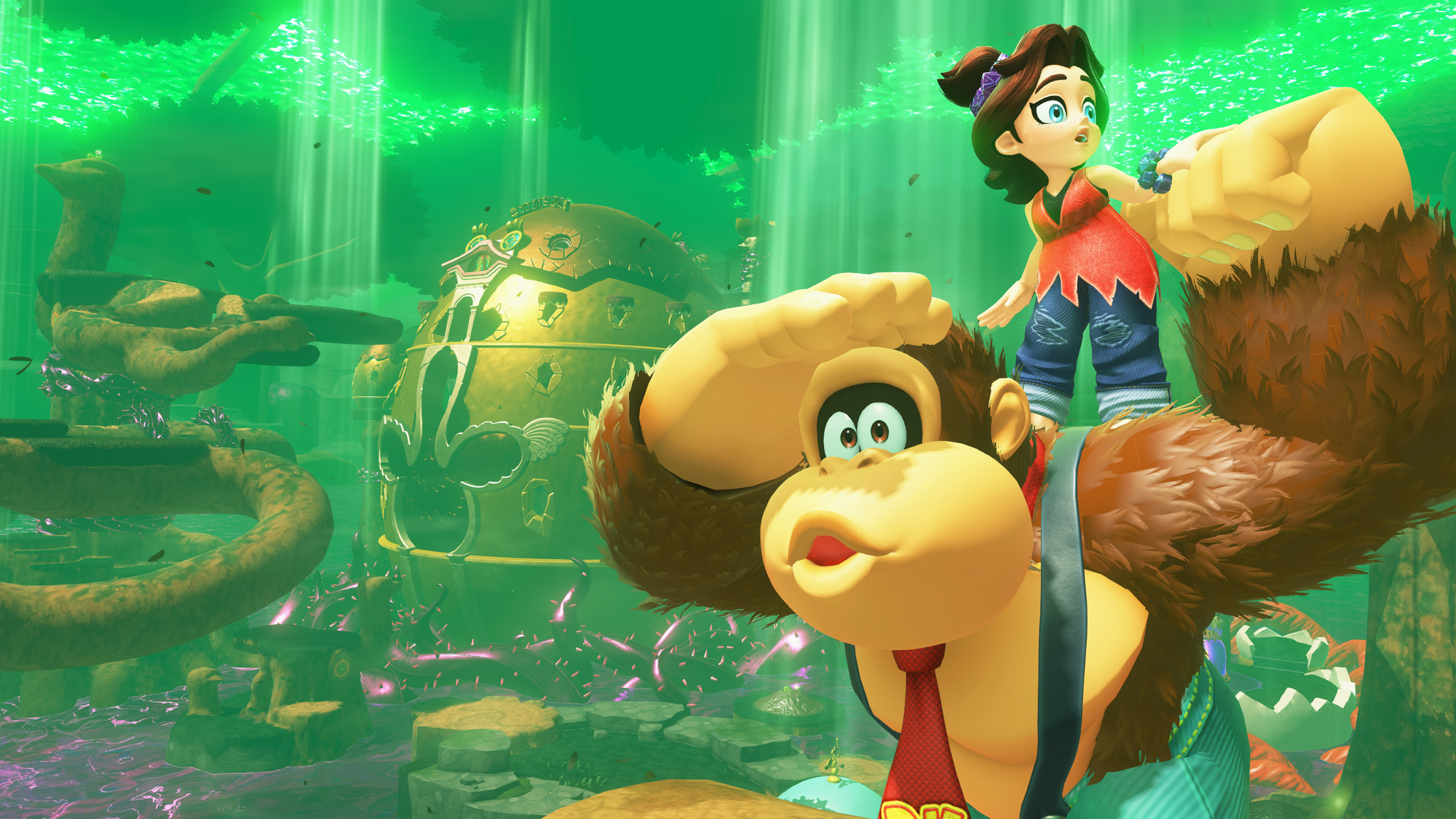 Source: Press Kit.
Source: Press Kit.
These characters never remain completely static; they grow and change over time, just like the players who love them so.
A friendship for the ages
I finished Donkey Kong Bananza several weeks ago (although I’m still playing through the post-game experience and the recently-released DLC). Time and distance act a little like a sieve; the truly impactful memories continue to shine through and the more forgettable elements fade away. Now that I think about it, one of Donkey Kong Bananza’s greatest triumphs is the genuinely touching friendship between DK and Pauline. Pauline, as a character, is as old as DK himself; you might remember her as the damsel in distress that Mario was tasked with saving (from DK!) in the original Donkey Kong arcade game. In more recent times, we saw her re-emerge, all-grown-up, as the mayor of New Donk City in Super Mario Odyssey. Donkey Kong Bananza completes the retcon by depicting her as a shy and loveable little girl who, through her unlikely journey with everyone’s favourite Big Ape, grows into a confident, self-possessed hero in her own right.
The interactions between Pauline and DK are touching, adorable, often hilarious, and always handled with masterful restraint. These two characters couldn’t be more different but this - as with many famous duos - is what makes the relationship work so well. A shared love of music is both a uniting force for the pair while also cleverly acting as a gameplay device in multiple ways (most obviously as a unique method for subtle way finding, should you get distracted and forget where your next objective is located). DK can’t speak in any human language and his emotions are mostly conveyed through wonderfully expressive body language, including what is possibly the widest range of elaborate facial expressions yet seen from a Nintendo character. Pauline understands DK, of course, and she happily chatters away in response.
I was surprised to discover the profundity of this friendship as the game progressed. There are no damsels in distress here; Pauline is every bit DK’s equal and the pair’s hand-in-glove relationship finely balances their interconnected strengths and weaknesses. DK encourages Pauline to confront her fear of singing before an audience, which, as mentioned above, serves multiple diegetic purposes as opposed to being merely cute window-dressing. And Pauline’s smarts and lateral thinking are essential fuel for DK’s impressive braun; his progress is driven in large part by her guidance, curiosity, and tenacity.
Mario and Luigi. Banjo and Kazooie. Donkey Kong and Pauline. After only a couple of hours of play, the friendship at the core of Donkey Kong Bananza didn’t feel at all novel; rather, it was as though this pair had been adventuring together for many years. This might be the highest compliment I can give and it is a testament to Nintendo’s thoughtful and nuanced approach here. Pauline herself has quickly become an iconic mascot; I’d happily play a game starring her, and I’d be more than delighted to see these friends reunite again in future Donkey Kong games.
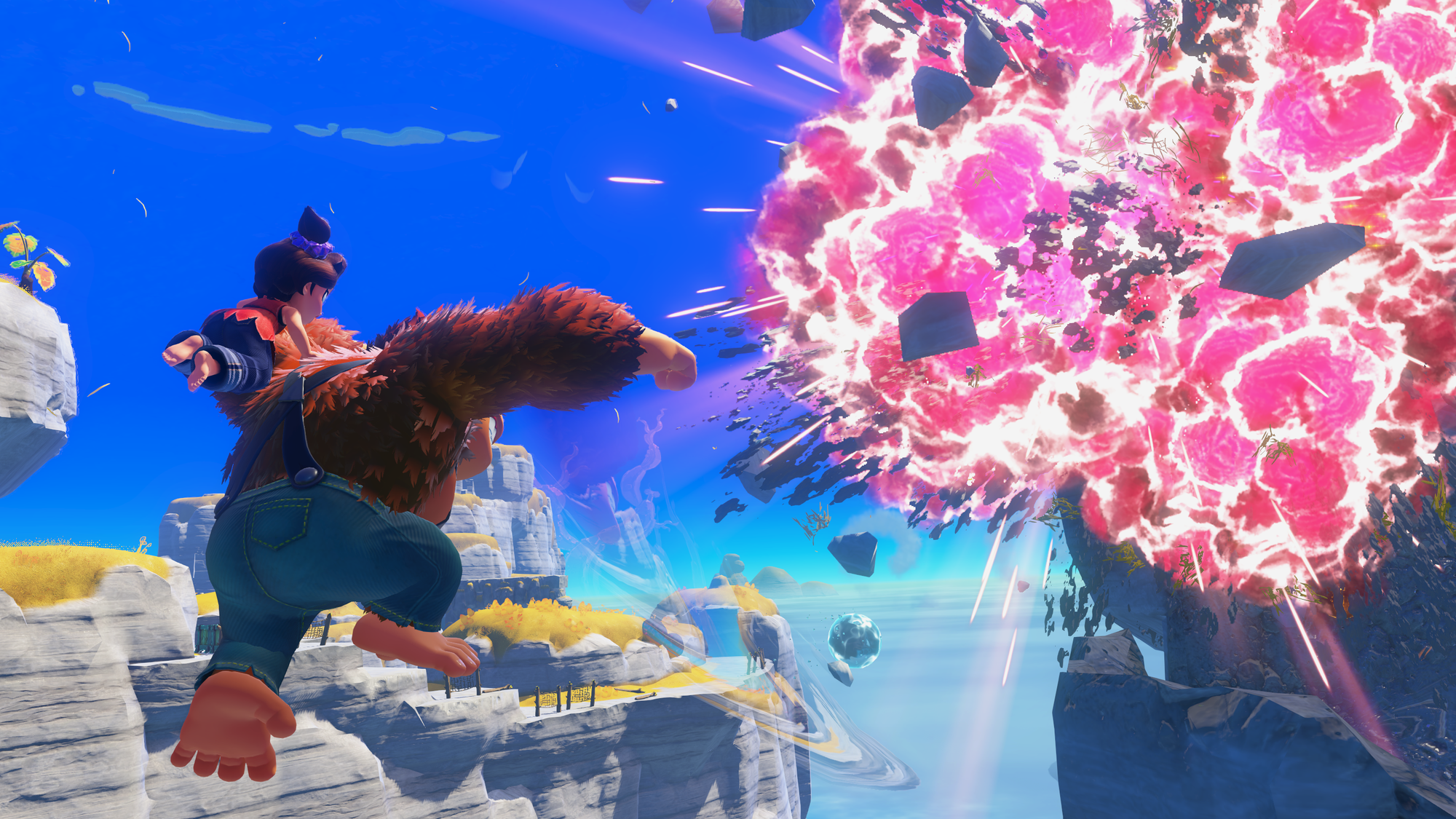 Source: Press Kit.
Source: Press Kit.
There are no damsels in distress here; Pauline is every bit DK’s equal and the pair’s hand-in-glove relationship finely balances their interconnected strengths and weaknesses.
A life of lessons learned
You probably have a favourite Nintendo era, which is likely influenced by your age and when you first discovered the company. Let me say, though, that I believe Nintendo are at the top of their game right now. Donkey Kong Bananza is a perfect example of the convergence of two important principles:
- Building on historical lessons and experience and;
- Leveraging these foundations to push innovation even further.
It’s very likely that you’ve read/watched plenty of reviews by now or that you’ve played the game and you’re keen to read another opinion on it. You might have noticed that much of the preview and early review coverage compared Donkey Kong Bananza to Super Mario Odyssey, often proclaiming it as Mario’s spiritual successor. Now, sure, there are some obvious and inexpensive comparisons that can be made between the two games: they’re both 3D platformers and Bananza shares some structural elements with Odyssey (objectives are plentifully littered throughout the worlds, and those worlds are self-contained, high-density puzzle boxes). But when I look at Bananza, I don’t just see Super Mario Odyssey. I see Breath of the Wild and Tears of the Kingdom. I see Splatoon. There’s even a little Kirby and the Forgotten Land DNA here. In other words, Donkey Kong Bananza liberally draws from a wide range of Nintendo experiences. I assure you, though, that this isn’t a reductionist perspective: Bananza never apes (🙊) any of these games in superficial ways. It is, rather, something entirely new that simultaneously couldn’t exist without the many prior experiments its design builds upon.
Controlled chaos
I won’t touch on the plot too much (while I don’t think anyone would expect a particularly deep plot from a platformer, there are nonetheless plenty of surprises and fascinating characters to encounter through the journey). What I will say, though, is that Donkey Kong Bananza’s central premise is the idea that you’re tunnelling your way down to the planet’s core. Each level takes place on its own distinct subterranean layer, and these layers must be unlocked by completing primary objectives (which are roughly divided into collecting Banandium Gems and defeating bosses). This concept pairs with DK’s new ability to punch his way through terrain. In fact, almost all of the terrain in each level is completely destructible. It’s quite possible, if you’re patient enough and can keep the RSI at bay, to smash apart a level such that there’s virtually nothing left.
A clever combination of thoughtful animation and force feedback means that all this excavation feels satisfying - not unlike Mario’s jump. It’s clear that the development team spent a great deal of time nailing this specific mechanic. DK can punch forwards as well as up and down, which makes it easy to quickly bore your way deep underground or back up to the surface. Importantly, the digging itself isn’t the goal here; although it’s fun, it’s still a means to an end. Exploring underground will frequently reveal collectible items and treasure, as well as hidden objectives and other surprising discoveries (including, at times, entirely obscured parts of the level that lead to further objectives, unique challenge stages, and more).
No matter how far afield you go, you’ll never get lost. You can quickly pull up a 3D map that provides a clear overview of the entire level including key points of interest. In addition, Pauline can guide you to your next objective in real time. Despite the considerable freedom you have to explore, it’s still possible to encounter impassable boundaries (there’s only so far down you can dig before you hit physical barriers, for example). Rather than simply wrapping each level in these boundaries, however, Nintendo still employs them in clever ways throughout each space and they often play a role in environmental puzzle solving.
In other words, Donkey Kong Bananza presents the best of both worlds: it offers greater freedom than virtually any other Nintendo game (except perhaps Tears of the Kingdom) while still offering clear primary objectives and a central progression path.
Don’t let the flexibility on offer here leave you with the illusion that Donkey Kong Bananza isn’t packed full of sharp, focused platforming challenges: Its levels, despite being highly malleable, are also among the most cleverly-designed in the history of Nintendo platformers. Your ability to reform the terrain around you often unlocks all sorts of lateral possibilities in terms of how you proceed forward. For example, you can grab clumps of earth in your hands and throw it against a wall to create climbable “stairs” up an otherwise impossible-to-climb surface. Enemies, too, can be defeated in a variety of ways and will sometimes require quite advanced techniques to dispatch quickly. Enemy design is balanced against the range of materials in the world. For example, grabbing and throwing soil might prove effective for very simple enemies, but you’ll need to break apart rock (including a special explosive variant) for armour-clad foes. Exploration through the world is also ring-fenced by different types of materials, each with their own properties (including a kind of difficulty rating that determines how strong DK must be to pick up or break a given material). This is just a small example of the many different elements that are folded into Donkey Kong Bananza’s design: sharp, precise platforming; non-linear sandbox-style worlds; environmental destruction; and a wide range of materials that each have their own unique properties. Donkey Kong Bananza builds on Super Mario Odyssey’s intricate “miniature garden” worlds and dramatically extends Breath of the Wild’s chemistry simulation in service of something that is at once far more ambitious and incredibly approachable.
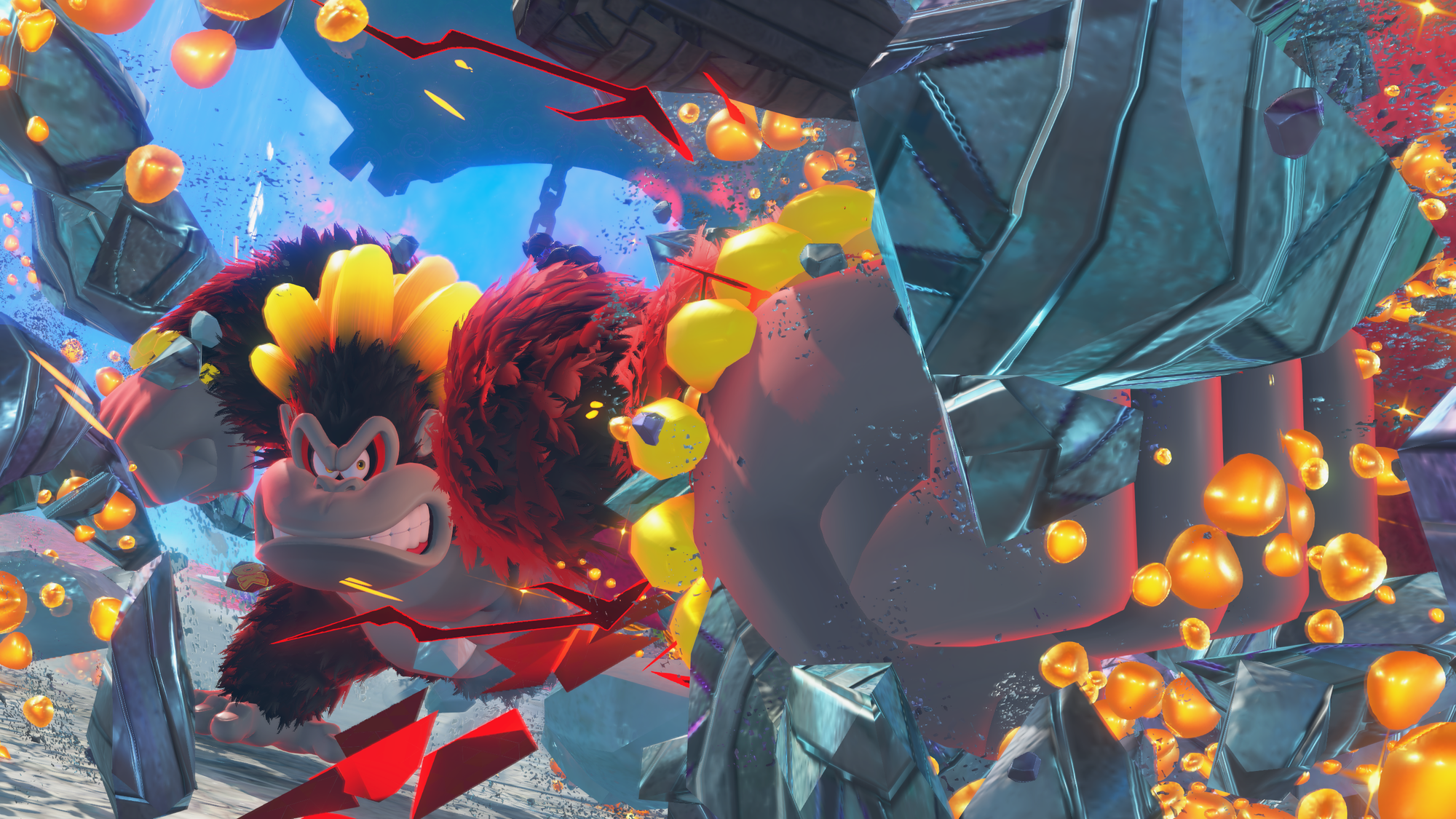 Source: Press Kit.
Source: Press Kit.
Donkey Kong Bananza builds on Super Mario Odyssey’s intricate “miniature garden” worlds and dramatically extends Breath of the Wild’s chemistry simulation in service of something that is at once far more ambitious and incredibly approachable.
Much to my surprise, DK now has various skills that can be levelled up throughout the adventure. These include his core punching strength (you’ll really want this to smash through much tougher materials later in the game), his total health, and his special Bananza transformations. In this iteration of Donkey Kong, you won’t ride other animals...you’ll transform into them. Each of these transformations is fun in its own way - and there are special levels that are entirely built around them, which offer additional variety - but honestly, they feel more like delightful bonuses than critical aspects of the experience. Playing as DK with his core mechanics is just so satisfying that I never found myself pining for the refreshment that the Bananza transformations offer.
Beyond imagination
Donkey Kong is both Nintendo’s oldest mascot and - thanks to Bananza - its freshest face. It’s true that the developers redesigned the character, taking great care to both respect his history while exploring an updated design language. As Daisuke Watanabe, the game’s Art Director, says:
“People’s impressions of Donkey Kong actually vary quite significantly from person to person. Donkey Kong began life in the arcades as Mario’s nemesis, but since then he’s had many guises depending on the game, be that a cool, rugged king of the jungle or a lovable goofball. So, rather than just giving him a simple design update, we strove for a design that would get to the core of what makes Donkey Kong who he is, bringing out his unique characteristics and appeal.”
Daisuke Watanabe Art Director
 Source: Nintendo.
Source: Nintendo.
While the developers don’t specifically cite Splatoon as an art influence, I found myself seeing a lot of Splatoon in this experience. It’s not just that music plays a big role in the story and its presentation (including oversized vinyl records acting as special objects and DJing being a major theme); it’s also that the general approach to art design is sharp, fresh, youthful, and at times imbued with a distinct urban flavour (no doubt to harken back to Donkey Kong’s origins in a neon-soaked NYC stand-in).
 Source: Nintendo.
Source: Nintendo.
Donkey Kong Bananza references history without ever becoming trite. The developers took the time to dig into the underlying meaning of the franchise’s earlier aesthetic and then leveraged this understanding to build something entirely new:
“Our goal was to make the Underground World feel like an entirely separate civilisation to that of the surface and to cram it full of variety. We felt compelled to create a fresh new world for Donkey Kong, so instead of sticking to what past games in the series had done, we made sure each Layer had its own unique world and flavour. That said, we did draw inspiration from Miyamoto-san’s original vision of Donkey Kong. By weaving neon colours into the visuals as a key element, we aimed to create something fresh while still evoking the feel of the original arcade game. By the way, the pink and light-blue neon tones were inspired by the colours of the ladders and steel beams in the original game.”
Daisuke Watanabe Art Director
When you sit down to play Donkey Kong Bananza, you never know what to expect from one moment to the next. The entire experience - from each interaction you have within each level, through to the remarkably wonderful meta traversal system that carries you between levels - is so finely tuned to continuously and consistently deliver nuggets of awe that you’ll lose the ability to stop smiling. Nintendo’s developers are so experienced and have become such masters of delight that they can afford to step out on the furthest limb and reach for the most mind-bending creative ideas (ideas that very few game devs could so confidently execute).
It’s akin to blasting off to explore distant planets with the world’s most talented crew on the world’s most advanced spacecraft; every time Donkey Kong Bananza reaches out to us with a furry paw, beckoning us to explore and play, we unflinchingly do so because Nintendo - and the game itself - has earned our confidence. I can almost hear DK whispering “Trust me, you’ll love this” every time I encounter something new here.
Donkey Kong Bananza is held aloft by its three equally important legs: gameplay, art design, and sound design. Every leg is doing its job here. Sound design is masterful, including fantastic dialogue (DK’s grunts, Pauline’s singing and playful chattering, and the deviously fun tantrums of the Void Co. villains), sound effects (smashing up earth and rocks can only be described as ASMR-like), and music (from stunning, epic orchestral arrangements through to remixed classics and clever atmospheric soundscapes).
I want to specifically highlight the music, because it fittingly lives up to Grant Kirkhope’s legacy without leaning on historical crutches. Certain tracks - like the infamous DK Rap - are playfully injected into the experience in creatively diegetic ways. But so much of the approach to music here feels genuinely novel, including the wonderful ebb and flow of musical energy that peaks and troughs as you explore further and deeper into this world.
Beautifully quirky tracks like Fractone Village perfectly complement the art and sound design of the level and express its inherent sense of whimsy. Hot-Hoof Heater presents a DK-flavoured spin on the traditional sand/lava environment. Mine-Cart Ride feels suitably epic and precarious. And then, when you least expect it, you arrive at The Divide:
Source: YouTube.
I won’t tell you what The Divide is. But I remember feeling a mix of emotions when I first arrived there. It may sound absurd - we’re talking about a platformer after all - but this moment almost brought tears to my eyes. The way it’s introduced, the role it plays in the larger experience, and the pensive tone of the music - its restraint in particular - got to me. There are two thoughtful variations on this piece that are utilised at specific moments within this area that demonstrate such brilliant attention to detail.
Post-game experience
Donkey Kong Bananza might be a highly innovative experience, but it’s also certainly a product of its time. Single-player games in the 2020s rarely just “finish”; there’s usually some sort of post-game experience, and Bananza absolutely checks this box in two distinct ways. There’s the included post-game experience; this is what you get without the recently-released DLC. I must say, it’s pretty robust. You’ll unlock new goals/quests after rolling the credits, special challenge stages, two ‘rush’ modes (one against regular enemies and one against bosses), and quite a bit more (including a range of new cosmetic items and so on). It’s hard to sneeze at any of this, given the impressive breadth and depth that the main game already offers. I found myself unable to peel the controller out of my hands after the final boss, and so, these additional bits and pieces were very welcome.
I also purchased the DK Island + Emerald Rush DLC (note that for the purposes of this story, one of my colleagues received a download code via Nintendo - but this main review was written with a purchased copy). If you have read or watched any reviews about this DLC, just bear in mind that much of the controversy surrounding it is based on a significant misalignment between expectation and reality. If you’re expecting entirely new worlds with new collectible bananas/quests, new bosses, and so on (in other words, a direct “extension” of the main game), then you absolutely don’t get that here. And if that’s a deal-breaker for you, then I wouldn’t recommend the DLC.
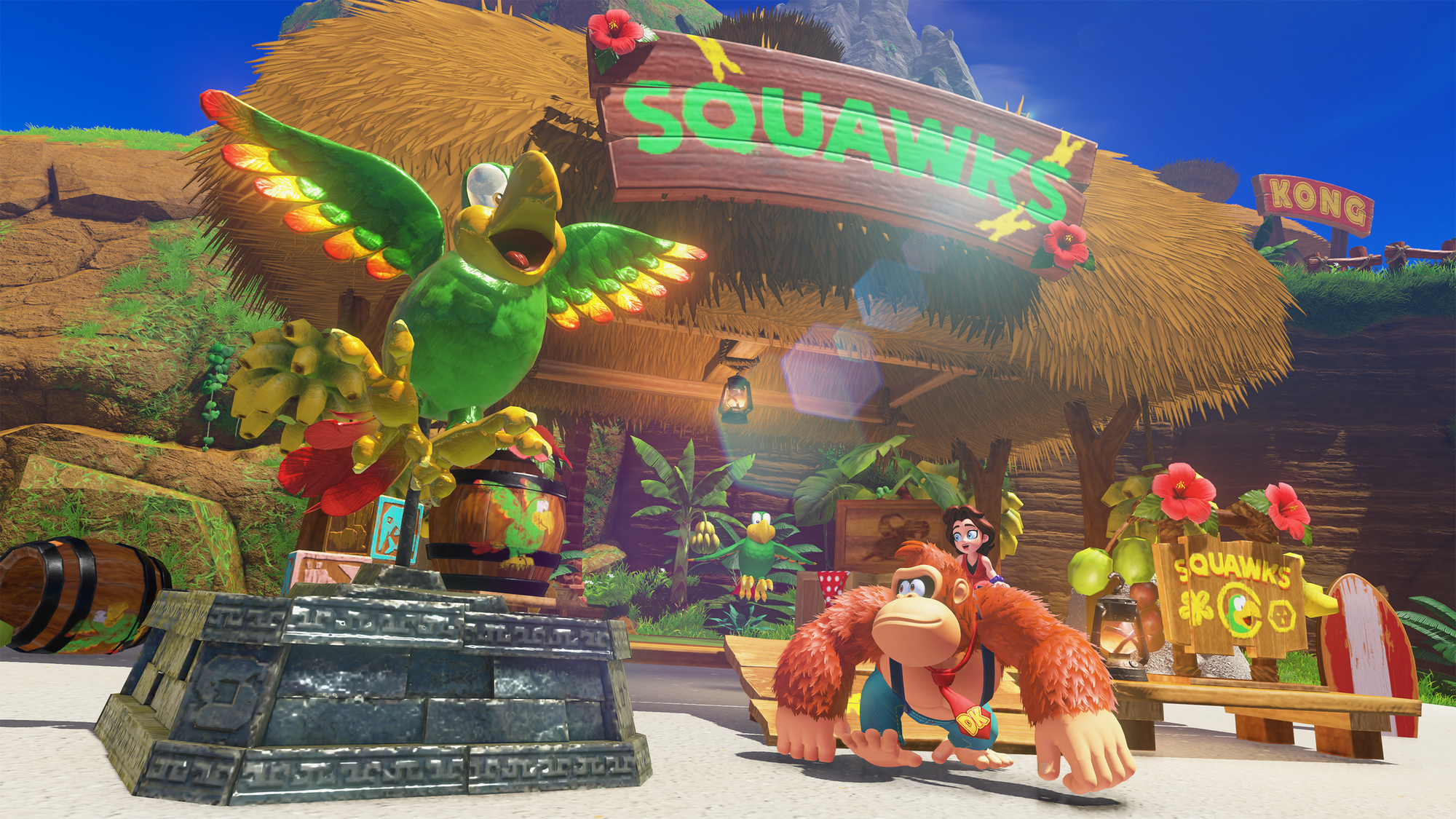 Source: Press Kit.
Source: Press Kit.
I won’t tell you what The Divide is. But I remember feeling a mix of emotions when I first arrived there. It may sound absurd - we’re talking about a platformer after all - but this moment almost brought tears to my eyes.
I really didn’t go into this DLC with any expectations. The prospect of at least one new locale - the titular DK Island - was enticing enough for me to jump in without hesitation. DK Island acts as the ‘hub’ and starting point for the new Emerald Rush mode. Emerald Rush reminds me a lot of Salmon Run in Splatoon; you drop into an existing level that is filled to the brim - both above and below ground - with emerald crystals (which, functionally, work a lot like gold from the main game). Your goal is principally to smash up and collect as much emerald as you can within a time limit (there are also special bananas scattered throughout the level for you to find). Within this context, you’ll receive dynamic challenges as you play (which typically involve beating a particular enemy, collecting a particular banana, and so on). Beating these challenges is one way you can unlock stackable bonuses/abilities that improve your performance. You’ll need to reach certain performance grades to unlock Emerald Rush across more levels.
Emerald Rush is a lot of fun, especially if you are looking to kill some time and jump into a quick game without a big time commitment. Yes, it offers you more of the same, but that’s fundamentally why it’s appealing: it gives you an excuse to dive back in and see if you can beat your personal bests as you push further and further to drive up your score and acquire more and more boosts/bonuses. Emerald Rush fittingly emphasises the most mechanically rewarding aspect of Donkey Kong Bananza: smashing stuff. By adding dynamic goals, you’re given a reason to smash more stuff over and over again; there’s always some new goal to drive for. But as I said above, you’re not really getting additional levels, new enemies, or new bosses here - so, I wouldn’t recommend this DLC to players who have no interest in returning to existing levels purely for a smash-fest.
Final thoughts
I am honoured to be joined by two of my colleagues - Jahanzeb Khan and Harel Cohen - to present our final thoughts on Donkey Kong Bananza.

James Burns
I have been sitting with Donkey Kong Bananza for quite some time before writing this review. After several weeks, do I still feel as giddy about the experience as I did initially?
In short, yes: I am confident that Donkey Kong Bananza represents Nintendo at the height of their platforming powers. Here’s a game that pushes the genre further than ever before; I absolutely know how bold this statement is, given the stunning examples of platformers we’ve seen in recent years (both from Nintendo and many other developers). But I stand by it.
Donkey Kong Bananza is an ambitious and creative re-invention of a beloved, classic franchise. It’s a thoroughly joyful, at times surreal, and utterly delightful journey through the imagination of the world’s greatest game developers. And it is, in my view, the Switch 2’s first must-own game.

Harel Cohen
To say that Donkey Kong Bananza is the game I bought a Switch 2 for would be an understatement. Anyone who knows me knows I love platformers, and with this being the latest game from the team behind Super Mario Odyssey, I was there on launch day.
This is the killer app for Switch 2 at publishing. It’s exciting, challenging, and even cathartic. In past platformers, breaking objects in the environment was a minor gimmick. Here, it’s a core mechanic. Running through open levels, smashing objects, using the environment to fight enemies, or creating shortcuts to bananas is endlessly satisfying.
With tight controls, catchy music, and a simple but impactful story, Bananza stands out as a brilliant entry in Nintendo’s catalogue. Boss fights can feel repetitive, and the game drags near the end, but these are minor complaints. This adventure absolutely deserves a golden banana!

Jahanzeb Khan
“Oh, banana!”
It’s a phrase that works for both joy and frustration. I hope it catches on — the perfect thing to say after stubbing your toe. I also hope Donkey Kong Bananza becomes an all-time Nintendo classic, a must-have for Switch 2 alongside Mario Kart World.
Nintendo lore is funny. Even if you try to piece together the Donkey Kong timeline, Bananza turns it upside down. Who is Cranky Kong if he’s not the original Kong from the 1981 arcade game? But does it matter?
Donkey Kong likes bananas, and he needs them all. But are the bananas in Bananza real? They look like mineral deposits — banana-shaped, not bananas. Does it matter? Probably not. It’s Donkey Kong, and he’s just gotta have ’em.
Bananza reinvents the 3D platformer collectathon: digging through terrain to uncover secrets and turning variable landscapes into clever levels. It’s a new Kong, but he still loves his bananas.